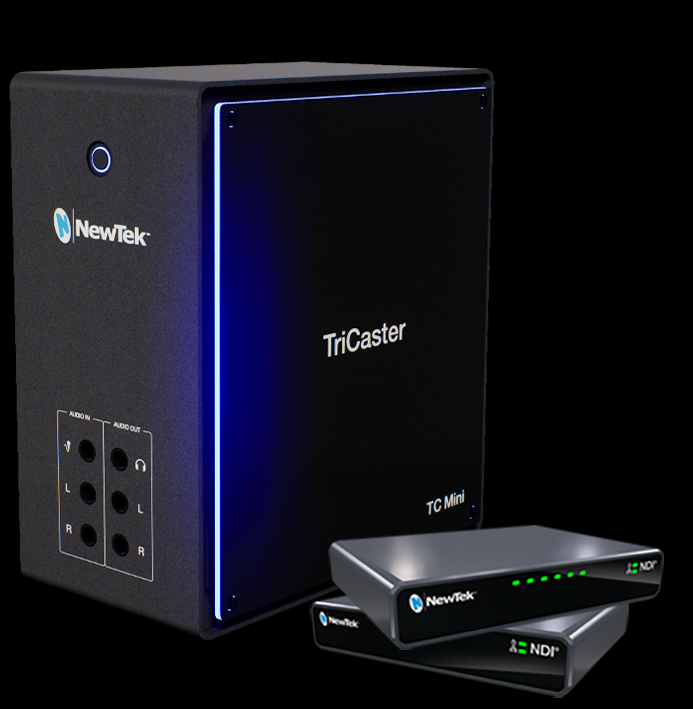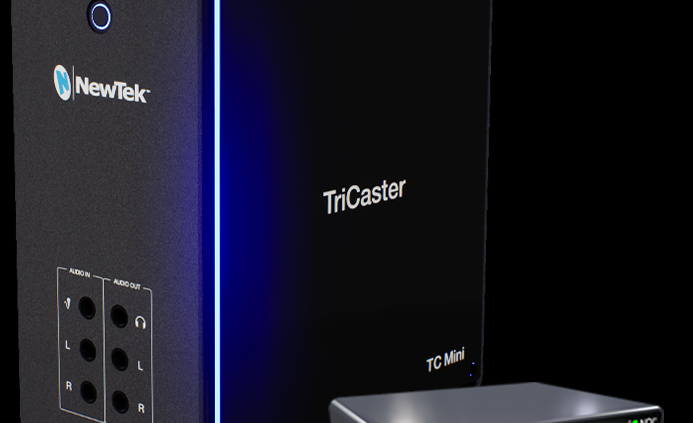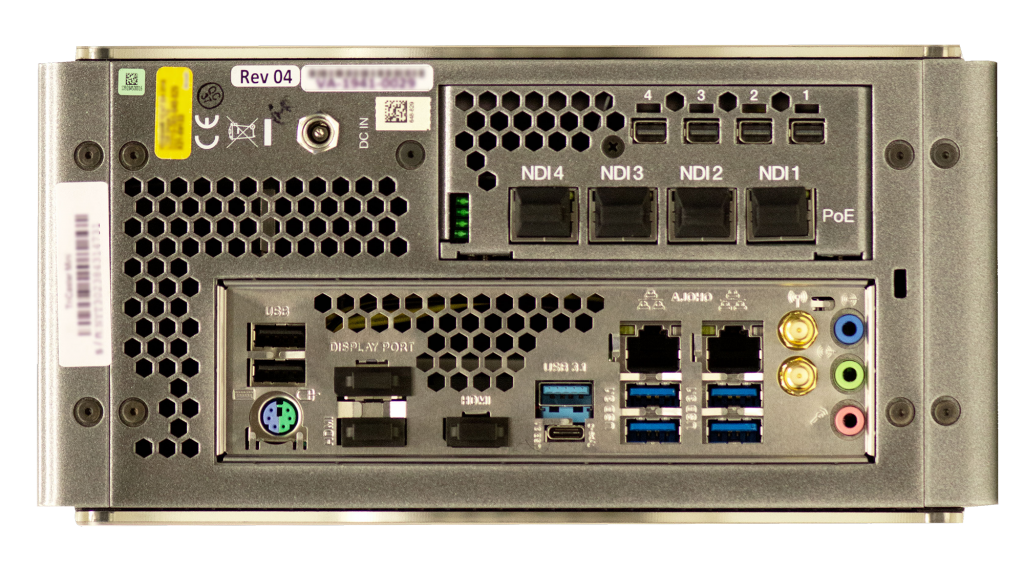TriCaster Mini 4K|NDI Networking Tips
By Adam Noyes
One of the most exciting new products to come from NewTek is the new TriCaster Mini 4K|NDI, an entirely NDI 4K production system. Because this device is still very new, any tips to come out from NewTek are highly valuable.
NewTek recently posted on their blog a support article, going through some frequently asked questions about the new TriCaster Mini 4K|NDI.

Check it out below!
Here is a brief overview of the networking abilities of the TriCaster Mini 4K|NDI. One main point to remember is that the TriCaster Mini 4K|NDI used in a standalone environment will not require any configuration of static IP’s. The system is designed to automatically provide DHCP to any device connected.
The TriCaster Mini 4K|NDI has two 1GbE NIC ports on the motherboard and four 1GbE NIC ports with PoE power on the expansion card. This gives the system a total of six 1GbE NIC ports of bandwidth to use for NDI network connections. Each port has it’s own IP range and is isolated from the others.
1) How does the TriCaster Mini 4K|NDI service work?
The DHCP service will start automatically on system boot and will stay running even if you exit into Windows which enables automatic networking available at any time and not only when the TriCaster itself is running. The service will bind to ALL network ports on the system, including the two motherboard ports. This means you can connect external devices to ANY of the network ports on the system and they will automatically get an IP address. This allows you to connect up to 6 devices directly, each to a network port on the system and they will automatically configure.
2) What if I connect to a network that already has DHCP?
In this case, the DHCP service on the Mini will initially scan for about 5 seconds for an existing DHCP service. If one is recognized, then the service will be deactivated for that port. This allows you to connect ANY port on the TriCaster Mini 4K|NDI to an existing network and use it for internet access or other LAN usage.
3) What range of IP addresses does the Mini’s DHCP server use?
The built in DHCP server will use the 172.16.x.x. range of IP address. The first network interface will get 172.16.0.x, the second interface will get 172.16.1.x and so on. This does mean that if you connect to a house network that is using the some of the 172.16.x.x network ranges you may run into a conflict, as the house network is trying to use a range that the Mini’s DHCP server is also trying to use on different interface.
The 172.16.x.x range is a reserved set of IP address for LAN networking that are not routed over the internet. It not might be as popular as the 192.168.x.x range found on many networks, but it is possible that some this IP range is still used for an in house network.
4) Can I adjust the IP ranges used by the Mini’s DHCP server?
Currently there are no options for adjusting the IP ranges.
5) Could I add additional NIC interfaces (USB or Ethernet adapter) to the TriCaster Mini 4k|NDI?
If an additional NIC is added, please be aware that the Mini’s DHCP server would bind to this interface and use additional IP ranges. Each subnet is configured as a class C subnet (using a netmask of 255.255.255.0).
This automatic configuration does come with one caveat: Devices connected to the TriCaster Mini 4K|NDI will not be visible to other existing networks unless a network switch is connected. Here is an example:
A PTZ1 camera is connected to one NIC and a laptop with Studio Monitor is connected to another NIC on the TriCaster Mini 4K|NDI. The data will not be bridged between the interfaces and the two devices will not see each other. Using NDI Access Manager to setup remote devices will not work, as there is no routing between the NICs. In this setup, both devices will be visible only to the TriCaster Mini 4K|NDI itself.
What’s the workaround for this workflow?
Connect the PTZ1 camera and the laptop to small switch and then connect the switch to a NIC on the Mini. Both devices will be given addresses in the same IP range and will now communicate with each other and with the Mini in this configuration.
You cannot use a static IP configuration for any NIC port that doesn’t have an external DHCP server on that network. In this case, the NIC port will revert to two modes:
- An external DHCP service is found on the interface. In this case, setting up a static IP address on the Mini for this interface is possible. However, it is recommended and preferred to setup a reservation in the DHCP server in this scenario. This will provide a constant IP address to the unit without having to configure the NIC port on the Mini.
- There is no external DHCP service found on the interface. In this case, the Mini’s built in DHCP service will be active and the interface cannot be configured for static IP configuration.


